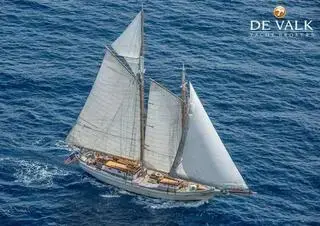
LENGTH:
41.99 ft.
|
YEAR:
1963
LOCATION:
Antibes
OFFERED BY:
De Valk Yacht Brokers
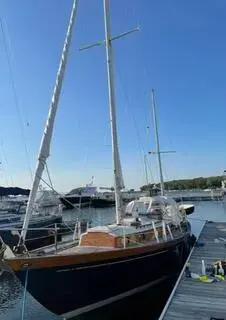
LENGTH:
35.01 ft.
|
YEAR:
1969
LOCATION:
Sister Bay, Wisconsin
OFFERED BY:
Yachtworks
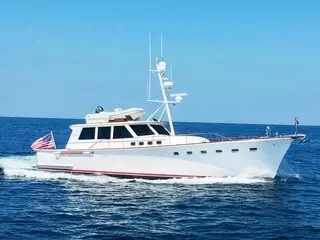
$499,000
LENGTH:
64.99 ft.
|
YEAR:
1970
LOCATION:
Newport Beach, California
OFFERED BY:
Northrop and Johnson
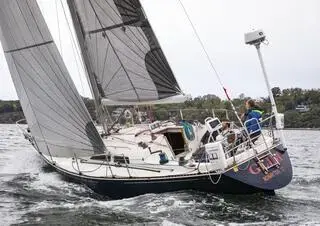
LENGTH:
39.6 ft.
|
YEAR:
1981
LOCATION:
Norwalk , Connecticut
OFFERED BY:
Brewer Yacht Sales
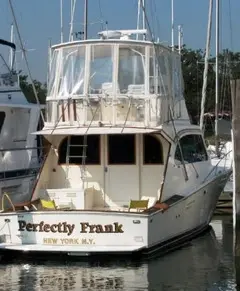
LENGTH:
46.75 ft.
|
YEAR:
1982
LOCATION:
New Rochelle, New York
OFFERED BY:
Brewer Yacht Sales
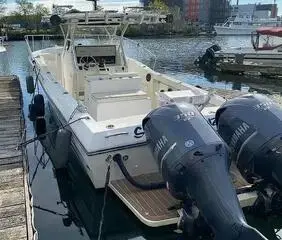
LENGTH:
33.01 ft.
|
YEAR:
1988
LOCATION:
Brooklyn, NY
OFFERED BY:
Denison Yacht Sales
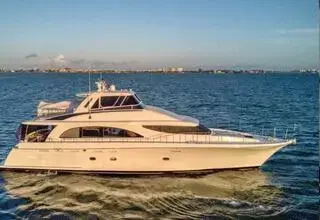
$700,000
LENGTH:
81.0 ft.
|
YEAR:
1998
LOCATION:
Fort Lauderdale, Florida
OFFERED BY:
Luke Brown Yachts
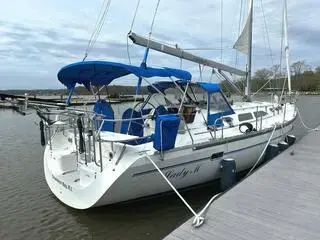
$129,900
LENGTH:
41.5 ft.
|
YEAR:
1999
LOCATION:
Verplanck, New York
OFFERED BY:
United Yacht Sales
Boat not available.
LOCATION
Marseille 13 France
YEAR
1939
LENGTH
79.99 ft.
Condition
Used
Year
1939
Make & Model
Silver-Yachts Classic John Bain Motor Yacht
Boat type
Power
Length
79.99 ft.
Fuel Type
Diesel
Location
Marseille 13 France
Tax status
Not Applicable
Beam
16.34 ft.
If ever a yacht deserves rescue it is CONIDAW, rescuer herself of almost 1200 soldiers at Calais and Dunkirk in 1940, and a stylish masterpiece of John Bain motor yacht design with such personality and presence. And if provenance and looks aren't enough, she has an arrangement on deck and below that is as practical and comfortable for a family cruiser and race yacht mothership as it was eighty years ago. CONIDAW is available both as a project with her present highly skilled owners Classic Works of La Ciotat, France, or for outright purchase to be restored elsewhere. She offers one of, if not THE most exciting restoration prospects for a vintage motor yacht out there.
Brokers CommentsIf ever a yacht deserves rescue it is CONIDAW, rescuer herself of almost 1200 soldiers at Calais and Dunkirk in 1940, and a stylish masterpiece of John Bain motor yacht design with such personality and presence. And if provenance and looks aren't enough, she has an arrangement on deck and below that is as practical and comfortable for a family cruiser and race yacht mothership as it was eighty years ago. CONIDAW is available both as a project with her present highly skilled owners Classic Works of La Ciotat, France, or for outright purchase to be restored elsewhere. She offers one of, if not THE most exciting restoration prospects for a vintage motor yacht out there.
RestorationCONIDAW requires a major and respectful structural, cosmetic, systems, and accommodation restoration. While not for the faint-hearted, the result will be one of the most fabulous classic motor yachts of this size. Detailed restoration specifications are available by request.
HistoryBy the late 1930s, the Provident Clothing and Supply Company (now Provident Financial), founded at Bradford, Yorkshire in 1881 by Joshua Waddilove, had become Britain's biggest supplier of credit to the working classes, lending £18 million (something like £1.2 billion in present values) to some 2% of the UK population. This was good news for naval architect John Bain and his James A Silver yard on the Clyde.
One of Joshua's grandchildren, Ernest Waddilove, had purchased 2nd hand in 1937 the 1930-built 52ft Silver 'Brown Owl' type BENITA, then decided he needed something larger and a whole lot more individual. Apart from stipulating that his new yacht should carry the Brown Owl cruiser stern and flared bow, as far as we can see from the result, Waddilove seems to have left Bain a free hand. The result is arguably the finest pre-war example of Bain's and his yard's work, and at time of launch CONIDAW was both the the largest yacht they'd yet built, and the largest wood yacht built in Britain that year.
She was launched into the Gareloch at Rosneath on Monday 29th May 1939 by Waddilove's tartan-clad wife, Constance, and it was her candid portrait rather than the yacht's that featured in the next morning's issue of the Glasgow Daily Record. It may be a fair guess that the yacht's name CONIDAW is a play on her name that perhaps only the couple understood.
The mainstream press were wowed by CONIDAW's modernities, 'The Scotsman' commenting on her "inter-communicating telephones in the navigation bridge, deck saloon, and cabins", while 'Yachting World' mentioned the galley "... fitted out largely in stainless steel and with a big Esse anthracite cooker and Electrolux refrigerator."
'The Yachtsman' was particularly taken with CONIDAW and it's worth quoting more extensively:
"CONIDAW... is an example of wood construction at its best. She has an extraordinarily stout oak keel and heavy double oak frames spaced 24 in. between centres, with 3½ in. bent timbers between. Planking and decks are of teak, 1⅞ in. finished thickness, and the superstructure is all of teak. There is a lead keel, in one piece measuring 34 ft. in length and weighing 6.3 tons.
"The design... indicates a comfortable, stable and seaworthy hull, which, despite its substantial construction, should be be quite easily driven. The forward entry is fine considering the firmness of the bilges, and the run aft is clean and fair. Above water the bows are nicely flared, the sheer is gracious to the eye and the stern has that elegant double rounding which tells that the question of cost has not been regarded as being of first importance...
"The deck saloon is light and airy and at the same time snug and cosy with no space-cramping fixed settees and plenty of room to walk about. The dining saloon, too, has adequate floor-space, whilst the galley adjoining it is roomy enough to give the cook a chance to do his best.
"Headroom in the galley and forward is nowhere less than 8 ft. and in the rest of the accommodation there is a clear 6 ft. 6 in. under the beams. The finish and joinerwork is, in the main, walnut, but the deck saloon is finished in teak. All the doors are of the flush-panel type and the interior panelling is plain in the modern style, without any mouldings. Calor gas fires are fitted in all cabins and all floors are carpeted. The fittings include a Nevastane stainless steel sink in the galley, Electrolux refrigerator, Esse Fairy cooker, Esse hot-water system (both hot-fresh-water and hot-salt-water are available) Rhodes Somnus mattresses, baths and basins, in the new coloured ware, supplied by W.B. Morrison & Son, Reid mechanical windlass, Wasteney Smith stockless anchors, Kent windscreen wiper, and Cutlass rubber bearings.
"The propelling machinery consists of a pair of 102 hp 6-cylinder 6L3 Gardner diesels with electric starting, and the auxiliary plant is a Stuart Turner lighting set. The yacht will be able to carry 600 gallons of fresh water and 600 gallons of fuel oil. Two boats are carried, the larger being a 15 ft. 6 in. speed launch fitted with a small sedan cabin and the second a 12 ft. dinghy. A steadying sail plan is provided, the two hollow masts carrying a total sail area of 400 sq. ft. in a ketch rig."
The traditional base for Waddilove family yachting activities was out of the Royal Yorkshire Yacht Club at Bridlington on England's north east coast, but they also vacationed on the south coast at Bournemouth, and the nearby Royal Motor Yacht Club at Poole was her home mooring for the very brief period the Waddiloves would have been able to enjoy her before the outbreak of the Second World War.
During hostilities she became His Majesty's Yacht CONIDAW, initially working as an echo sounding patrol vessel armed with Lewis sub-machine guns from England's south east coast, and it is during this period that the rescue heroics of yacht and crew at Calais and Dunkirk during Operation Dynamo became legendary.
By May 1940 the allied situation was getting desperate. The Nazi blitzkrieg had reached the outskirts of Calais and only a handful of riflemen were left to defend the town. The battle was unwinnable and after a devastating pounding, the garrison was ready to leave. But if Calais fell there was nothing to stop the Nazis driving through and massacring the remnants of the French army and the British Expeditionary Force trapped on the beaches at Dunkirk. Winston Churchill said it was the toughest command he ever had to give but on 25th he issued the order personally: “Calais must be held at all costs”.
But how to get the signal to the beleaguered garrison in Calais? The soldiers had no working radios and the telephones were cut. The only possible solution was to send the written command by hand, so the vital message was entrusted to Royal Naval Reserve Lieutenant Reginald G. Snelgrove, who took HMY CONIDAW under continuous bombardment through the minefields into Calais to deliver the order to Brigadier Nicholson in person.
Next day the fighting was frantic, and one after the other the remaining Allied ships left the port. Finally CONIDAW was the only one left, staying on alone while the ferocious battle raged around her. Only as the first tanks of the 10th Panzer Regiment burst onto the quay itself did the last 165 soldiers jump on board and CONIDAW left Calais as fast as the twin Gardner 6L3s could drive her.
But just on clearing the mole disaster struck. She ran aground. The cramped soldiers must have felt they faced death in a few minutes. Nazi artillery would show no mercy for a stationary target with nowhere to hide. But then a fortuitous near miss by a bomb blasted the yacht off the sand with its shockwave and she scurried away to Dover. The scars of that encounter are still with her as her port engine still has a repaired cracked sump from that bomb blast.
Lieutenant Snelgrove received the Distinguished Service Cross in recognition of his heroism in Calais that day. His signalman, T.H. Bailey, was awarded the Distinguished Service Medal.
Next morning CONIDAW joined the armada of little ships rescuing the remaining French and British soldiers off the Dunkirk beaches. Her shallow draft allowed her to go close inshore to take the starving, frightened and exhausted men out to waiting ferries in deeper water. Altogether she saved 900 in this way before returning battered but unbowed to Dover with another 80 soldiers on board.
After the excitement of those few days in May and a rest for emergency repairs at the Whitsable, Kent yard of Anderson, Rigden & Perkins, the rest of the war may have seemed a welcome anti-climax, although she was credited with shooting down a Heinkel bomber with machine gun fire. Some subsequent ports CONIDAW may have operated from are Scapa Flow in the Orkney islands, Plymouth, Dover and at Le Havre, France.
It is not yet clear if the Admiralty's wartime use of CONIDAW was by outright purchase or by donation/ requisition. If there was an option for the Waddiloves to have her back in 1945, it wasn't taken up, and her first post-war owner became former career soldier and Cambridge brewer of "Dales's Champion Beer", Lt Colonel Guy Frederick Dale, who also kept her at Poole, One of her summer destinations involved a return to northern France at fashionable Deauville.
In 1952 CONIDAW's ownership transferred to London merchant banker Herman Andreae, leader of his family firm, Kleinwort & Co (now Kleinwort Benson), whose pre-World War Two boat ownerships included the Charles E. Nicholson-designed International 23-Metre CANDIDA (as commissioning owner), and from 1935 as second owner of the J-Class America's Cup challenger ENDEAVOUR. During his ownership Andreae was proprietor of South Uist Estate, a large part of Scotand's Outer Hebrides including Benbecula, South Uist, Eriskay and Barra. Perhaps CONIDAW cruised the west coast of Scotland in these years.
Then in 1955 her registry moved to Belgium under the ownership of pioneering high-end Brussels department store À L'Innovation owner Émile Bernheim. Earlier in the 20th Century, together with his brother Edmond, Bernheim had developed the to this day imposing and luxurious Le Beauvallon Hotel (originally Le Golf Hotel) on the north shore of the Bay of Saint-Tropez. So it's fair to suppose that CONIDAW's arrival in the Mediterranean coincides with this period of ownership, which didn't last long.
From 1958 John L. Green, of Liechtenstein, was the new owner who gave her the name she would carry for the rest of her active life, THOMASINE. Curiously Green also owned the converted G.L. Watson-designed RNLI pulling and sailing lifeboat ETERNAL WAVE, which as JAMES STEVENS No.20 had been stationed in Ireland at Cobh (formerly Queenstown) and Fenit between 1901 and 1928. Both yachts and Green slipped out of Lloyd's Register of Yachts from 1967 and after that CONIDAW/ THOMASINE's ownership history until more recently is unclear.
But this remarkable yacht is still very much with us and deserves rescue so so much.
©2021 Iain McAllister/ Sandeman Yacht Company Ltd
- Teak planking
- Copper sheathed bottom with tar felt layer
- Sawn oak frames
- Bent oak timbers
- Massive oak wood keel
- 6.3 tons lead keel
- Teak deck
- Teak deck carpentry
Teak and walnut carpentry
WHEELHOUSE
- Access offset to starboard from aft deck shelter
- And via port and starboard doors
- Raised helm platform offset to port
- Ship's wheel
- 2 x Fwd/ astern wheels
- Instruments
- 2 x Kent type 'Clearview' screens
FORWARD DOWN 2 x STEPS OFFSET TO STBD TO SUNKEN DECK SALOON
- 2 x Steps down to aft accommodation to port
- Lockers and drawer to port
- Swept settee to port
- Large drawer under and locker
- Sideboard fwd to port
- Sliding windows port and starboard
- Aft facing settee port fwd
- Drawers under
- Curved oak sideboard to starboard
- Carousel bottle stowage
- Lamps and deckhead lights
- Ship's barometer
FORWARD DOWN 3 x STEPS TO LOWER DINING/ SALOON
- Aft facing bureau immediately to port
- 'L' Settee
- Stowage under
- Dining table (not fitted)
- Sideboards with drawers and lockers to starboard
- Large butterfly skylight in deckhead
- Bulkhead mounted electric lamps
DOOR OFFSET TO STBD ACCESS FWD TO ATHWARTSHIPS GALLEY
- Top surfaces
- Lockers above and below
- Plate racks
- Cooker
- Extraction hood
- Sink
- Water boiler
- Butterfly skylight in deckhead
DOOR OFFSET TO STBD TO CREW ACCOMMODATION
- Lobby with ship's stair to port to sliding forehatch
- Originally captain's cabin to port presently a workshop
- WC compartment to starboard
- Forward to fore crew cabin with 2 x generous sized berths
- Stowage under
- Hanging lockers
- Deckhead lights
- Forward to chain locker via stepladder and 2 x access hatches
ACCESS TO AFT ACCOMMODATION FROM DECKHOUSE
- Down 6 x steps
PASSAGE ATHWARTSHIPS TO STBD
- Leading to passage extreme starboard fwd to deck saloon
CENTRELINE PASSAGE AFT
WC Bath and shower room to stbd
Single berth and single folding berth cabin to port
- Stowage under berth
- Hanging lockers
- Sideboard
- Wash hand basin
Single berth cabin to stbd
- Stowage under berth
- Hanging lockers
- Wash hand basin
Double berth cabin to port
- Stowage under berth
- Hanging locker
Master en-suite twin berth cabin
- Stowage under berths
- WC Compartment
- Hanging locker
- Sideboard with drawers under
- Athwartships aligned butterfly skylight in deckhead
- Escape ladder to skylight
- 4 x Period reading lamps
FROM AFT
Spacious aft deck mostly under shelter aft from wheelhouse
- Galvanised stanchions and rails
- Teak aft deck top rail
- Gate at stern for passarelle boarding
- 2 x Original galvanised mooring fairleads and bollard cleats
- 2 x Bronze bollard cleats
- Ensign staff socket
- Athwartships aligned butterfly skylight over master cabin
- Mooring lines stowage box
- Mizzen mast in tabernacle
Open aft deck shelter extension aft from wheelhouse
- Retractile table
- Athwartships settee
- Grabrails port and starboard
- Sliding windows port and starboard
Side decks aft part
- Gates in rail port and starboard
- Steps up to fore side decks port and starboard
- Galvanised stanchions and rails (no teak rail)
- Engine room hatch at port fwd side deck
- Galvanised mooring spring lines fairleads and cleats port and stbd
Foredeck
- Mooring lines stowage boxes port and starboard
- Long butterfly skylight over lower saloon
- Main mast in tabernacle
- Smaller skylight over galley
- Forehatch
- 2 x Original galvanised mooring fairleads and bollard cleats
- Thomas Reid stbd engine shaft driven anchor windlass
- Galvanised bow rollers each side of stemhead
A note on CONIDAW's original, 2 X 6-Cylinder 102hp Gardner 6L3 Diesel engines with Gleniffer gearboxes:
CONIDAW's engines are exceptional. The two blocks are perfect mirror images of each other, rotating in opposite directions, so only the engraved name of Gardner shows that the one is not a reflection of the other. Production of the Gardner 6L3 gave way to the 6LB a couple of years after CONIDAW was launched, and that too eventually evolved into the Gardner 6LX, power plant of the famous scarlet painted double decker London bus. No doubt London Transport appreciated the staunch reliability of a marine engine converted for use on land: the very opposite of the Caterpillar, MTU or Volvo story today where engines are designed for the huge truck market and then adapted for use afloat. The subdued ticking of the Gardners’ slow revving cadence is a far cry from the high-pitched roar of today’s truck derived successors. Gardners are noted for their thrift as well as their reliability, so CONIDAW’s two tons of fuel oil provides an exceptional range for her easily driven hull. Furthermore there is excellent Gardner expertise and adequate spares available, so maintenance will not pose a problem.
- 15kVA Onan Generator
- Port side hydraulic stabiliser
Ketch rigged
- Main mast
- Electric winch
- Mizzen mast
- Electric winch
- Original designed sail area: 400 sq ft / 37 sq m
- Main boom set up as tender launching derrick
- Covers for skylights and hatches
- Steering compass
- Decca 101 radar
- Navigation lights
- Teak accommodation ladder
- Aluminium and teak passarelle
- Zodiac inflatable tender with outboard motor
These particulars have been prepared from information provided by the vendors and are intended as general guide. The purchaser should confirm details of concern to them by survey or engineers inspection. The purchaser should also ensure that the purchase contract properly reflects their concerns and specifies details on which they wish to rely.
Engine Count
1
HULL
Hull Material
wood
The Silver-Yachts Classic John Bain Motor Yacht is 80 feet long that boasts a 16 feet beam. The Silver-Yachts Classic John Bain Motor Yacht is made of wood.